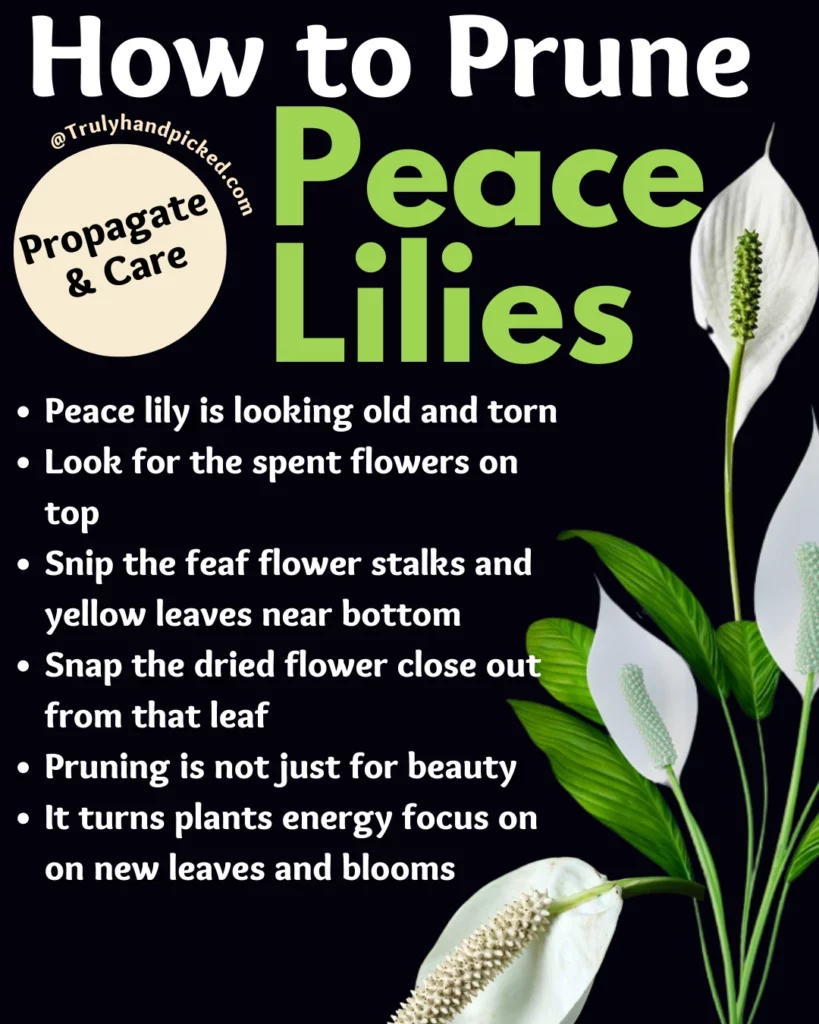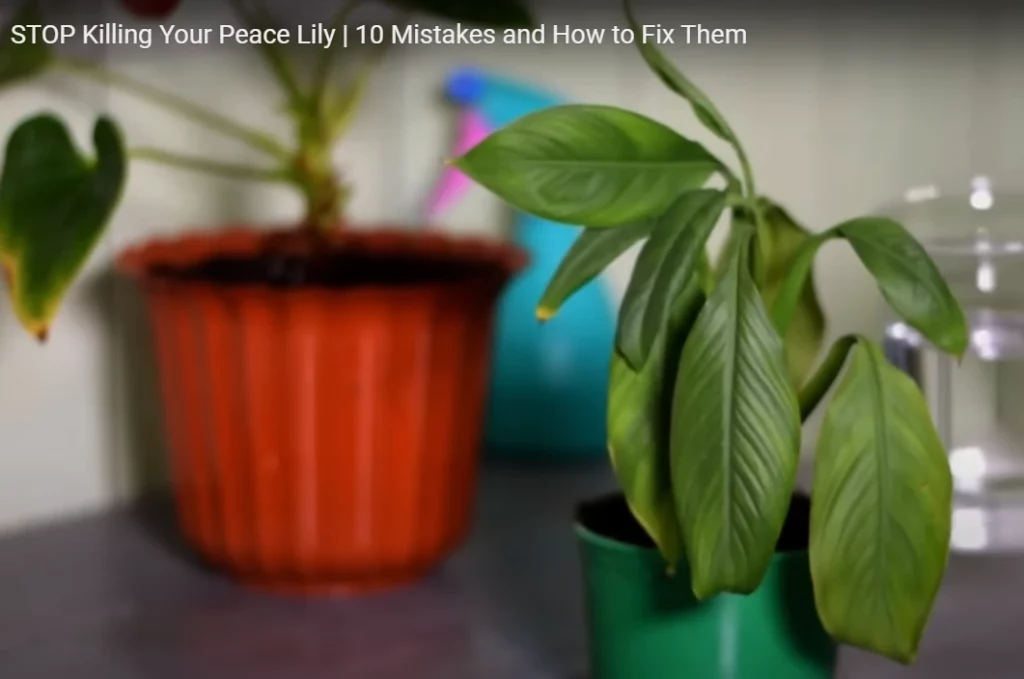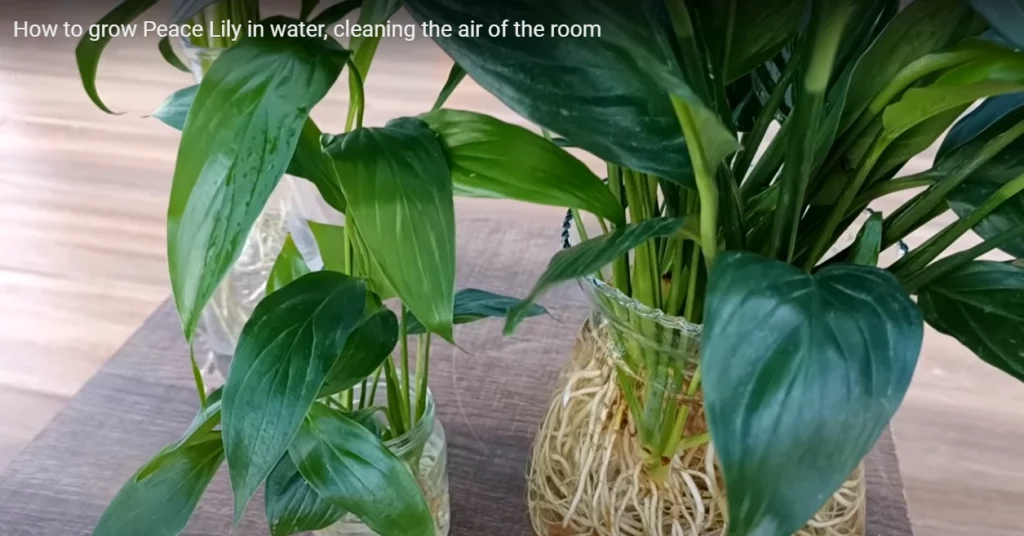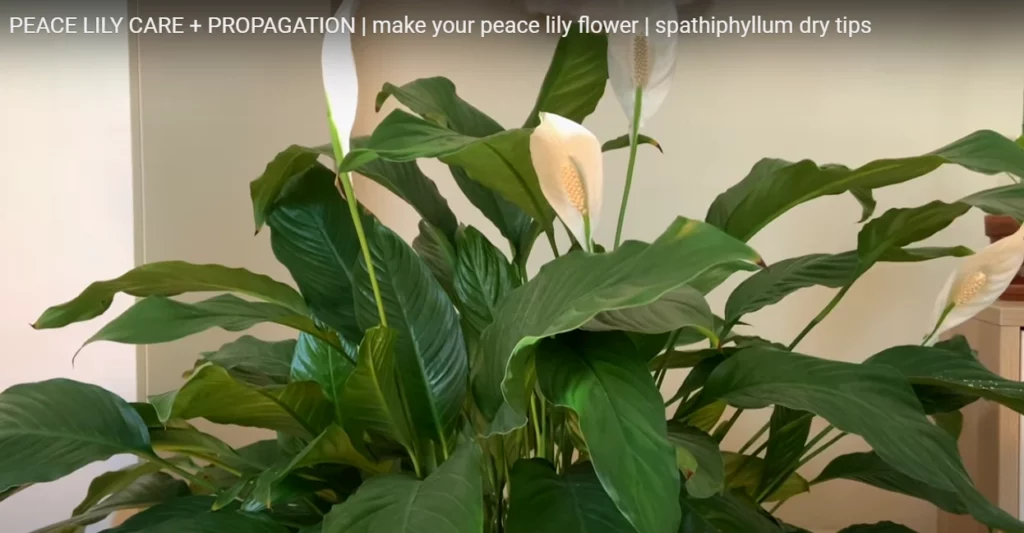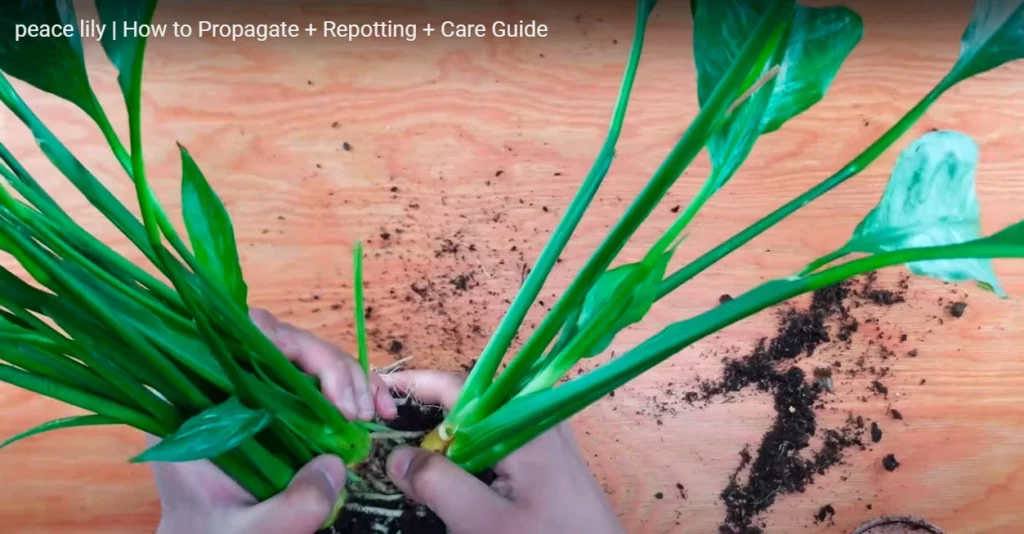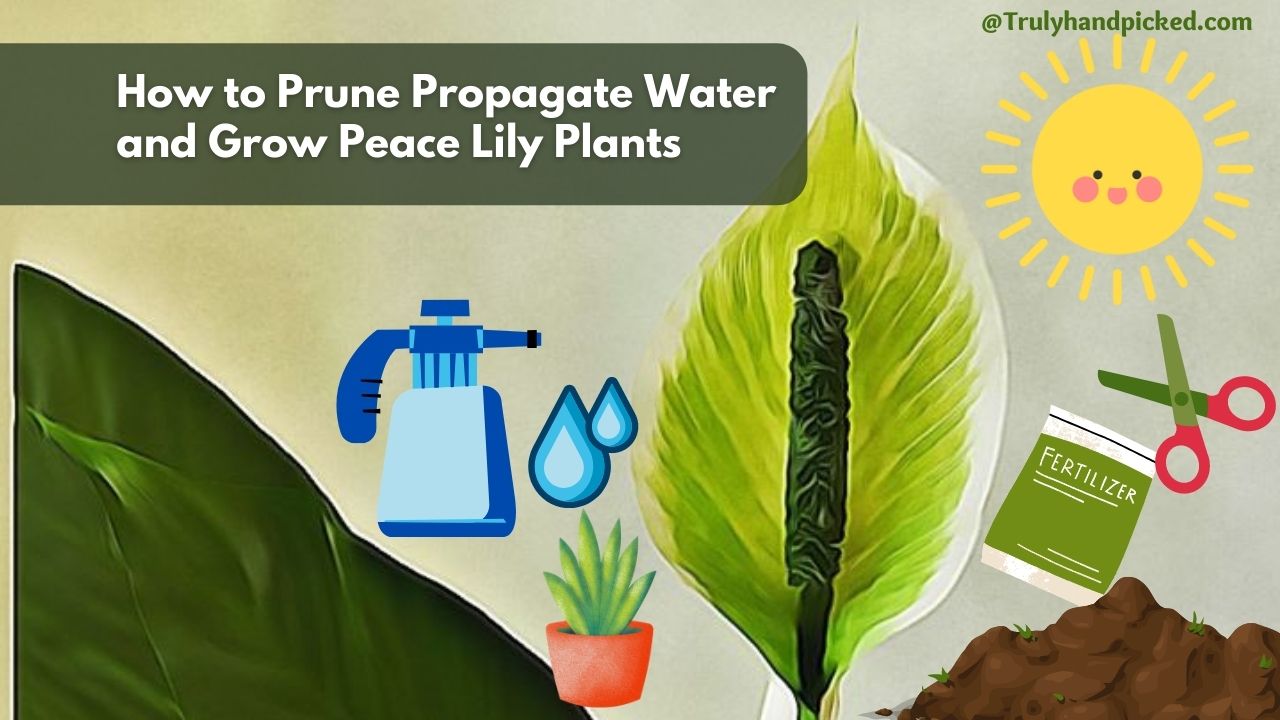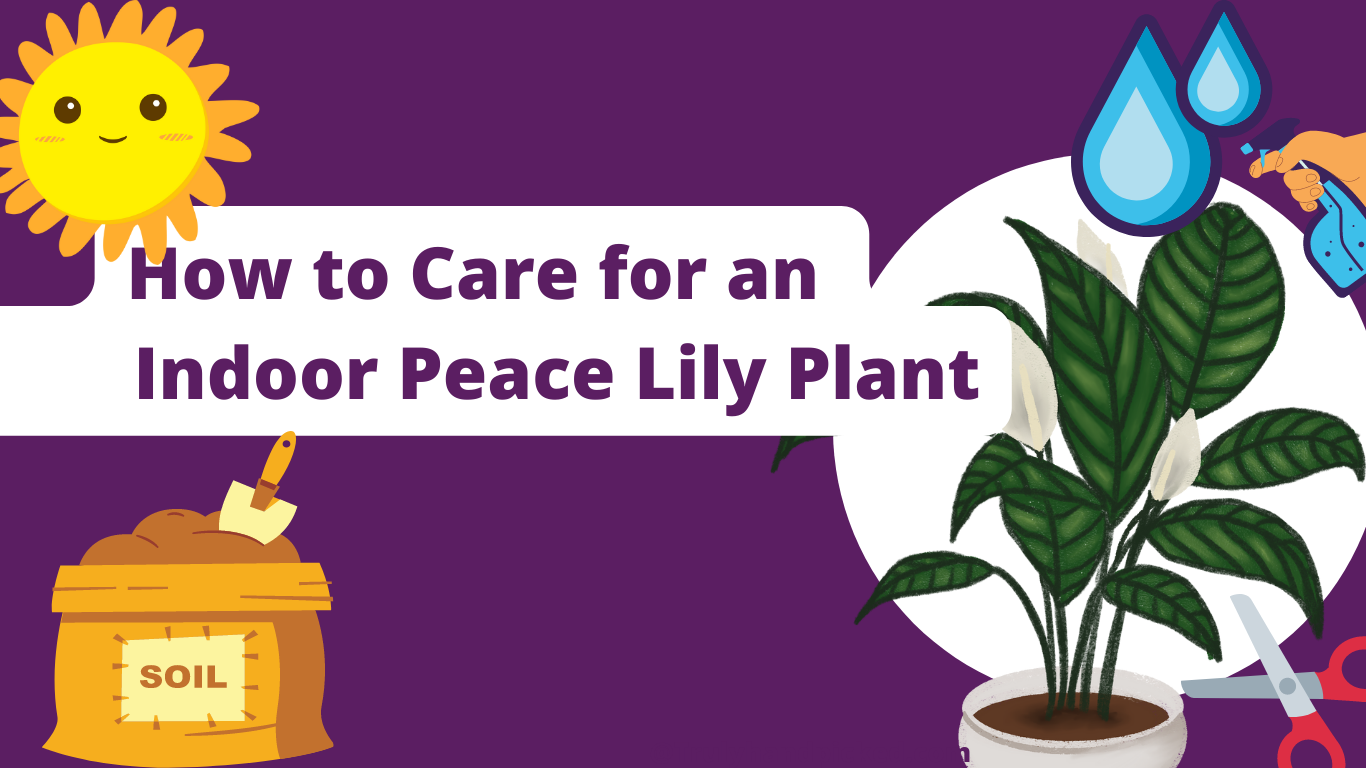Peace lilies are one of the favorites for indoor gardeners for their super glossy leaves and lovely flowers. So, let’s have a quick overview and step-by-step ideas for the peace lily plant watering, pruning, and propagation.
Contents: How to Prune Peace Lily | How to Propagate Peace Lily | Sunlight Requirements & Watering | Fertilize Peace Lily Plants | Split and Repot |
The pruning process not only makes your peace lily beautiful, but it’s also good for the plant to focus its energy on the growth of new leaves and blooms.
Not just an aesthetic piece that adds greenery to your room, they are fantastic air purifiers too. Running out of time here is a quick read on pruning, care, and propagation
How to Prune Your Peace Lily
Just like watering, fertilizer, and sunlight for your peace lily, pruning is essential for your plant to stay healthy, and bright and for bold blooms. Also, pruning gives more room for new growth.
- If your peace lily is looking old and torn with yellow leaves and brown tips, it’s time to prune.
- Look for the spent flowers on top and yellow leaves and brown dried leaves at the bottom.
- Take clean sterilized scissors or pruner.
- Look for the spent dried flowers and reach them all way down to the surface or originating from a leaf (prune lower on the stem).
- Snap the dried flower close out from that leaf
- Similarly, reach the bottom part and look for yellow leaves and brown dried dead leaves
- Get maximum close to the soil for that yellow leaf and snap (at the base of the yellow leaf).
- Disinfect your pruner/shears after cutting the yellow leaves
- Careful not even to make a small cut on healthy leaves and stems
- As it can make way for diseases much faster.
- The pruning process not only makes your peace lily beautiful, but it’s also good for the plant to focus its energy on the growth of new leaves and blooms.
- If your peace lily is outgrown off the pot, it’s recommended to repot it asap.
- Don’t wash your plant with cold water which may shock your plant but misting and wiping leaves with a damp cloth is recommended.
- And finally, don’t leave traces, yes remove the cut leaves from the place as they are toxic to your pets
Related: Make your peace lily grow bushy and bigger with shiny leaves
Short Video: Peace Lily Rescue and Repotting > Rescue Root Bound Peace Lily
Quick Tips: Peace Lily Plant Care
Soil and potting mix: Needs well-drained rich soil or loamy soil with compost and elements which support good drainage.
Watering: Water once a week or when an inch depth of your soil has turned dry. Don’t over or underwatering which will make your plant leaves droop down.
Sunlight: Well-lit warm and humid room with partial sunlight for the plant. Avoid direct sunlight to prevent leaf burns.
Flowering: They can tolerate low light, but the too-low-light conditions could make even a healthy plant go without blooms. Using fluorescent lights indoors during winter and cloudy months could provide enough light for your plant.
Fertilizer: Peace lily plants don’t demand fertilizers, it is okay to fertilize once in 3 months and use fertilizer in lower doses and strength.
Propagate: Gently take your plant out and check for a new base stem with shoots and roots. Split them to get new plants from the mama.
Related: Why my peace lily is not blooming how to fix
Video Growing Happy Peace Lily Plants >> Stop Killing Peace Lily
Underwatered Peace Lily: Signs and Steps to Fix
- Your plant will look drooping
- Discoloration in leaves yellow and dry leaves
- An overwatered plant will show yellow and brown spots in the center, while an underwater peace lily will show brown spots in the leaf edges.
- While Brown and crisp leaves can be misunderstood with underwatering, it may be caused because of scorching sunlight
- Worrying about overwatering we leave it to dry out. Peace lily will show first signs in leaves wilting and a dull lifeless looking plant. Visiting your garden once in two days will help fix issues asap.
Fix Underwatered Peace Lily
- Remove near-dead or yellow leaves as reviving those leave is not possible and the plant will save and focus its energy on growth
- As a rule of thumb, check with your fingers if the top few inches of soil are dry
- If possible and you have a huge sink or tub do bottom watering
- Or water to hydrate the soil with enough water and watch for the excess water to drain out through the planter
- If the plant looks dying, move it to a spot with less intense sunlight
- Mist the healthy-looking green leaves (once a week during regular days)
- If your plant is thirsty for a long and looks totally dehydrated, it will take a week or more to shed some more leaves on its own and recover back to normal
- A humid room away from windows and doorways and fireplace, and a bright indirect light spot will help your peace lily recover faster.
Should I bottom water my peace lily? Yes! bottom watering is like plunging into a hot water tub, feels relaxing right? Similar to us bottom watering peace lilies will soothingly hydrate the root balls of peace lilies.
Benefits of Having Peacelily at Home/Office
- A lovely plant that forgives you, even if you forget to water in your busy schedule.
- One of the top-rated air-purifying plants reduces indoor pollution for better air quality.
- Non-demanding plant with lesser maintenance.
- It’s simply an amazing plant with glossy dark leaves and lovely flowers that are aesthetically pleasing.
- Removes acetone, mildew, and mold spores, and thrives with less care absorbing excess moisture.
- Don’t know whether it’s lucky or not but surely calming with its appearance sending good vibes and promoting sleep.
- These vibrant plants can grow up to 5 feet high and can happily live for 3 to 5 years with proper care.
How to Propagate/Split Peace Lily in Soil and Water
You can’t grow a peace lily from its leaf or stem but, you can get a new plant by division.
- Splitting your peace lily should be done during the normal days of any season, not in extremely cold or peak summer. As it may add division and transplant shock for the plant added to the climatic season stress.
- Without much root damage slowly take the plant out and gently massage out to clean debris for clear roots. Check the core part of the plant for additional shoots with leaves.
- Now gently and slowly split the part from the core which formed its base and stems with the new shoot of leaves and roots attached.
- Now you have two or three plants depending upon the number of crowns with new shoots.
- Later repot them in loamy soil with compost and perlite or similar ones to keep them well-drained and moist.
Video: Growing Peace Lily in Water
Peace Lily in Water:
- Just like repotting in the mother plant, take the divided peace lily and wash it in tap water to get rid of dirt for clear roots.
- Now you can use a glass bowl or the container you have bought it, half fill it with water, and place the plant.
- Make sure to keep the base of your plant remains about the water level. You can use plugs, pebbles, or river stones to keep your plant’s base above the water surface with its roots submerged in water.
Video on Peace Lily Propagation
How to Split & Repot Peace Lily Plants
Video on peace lily propagation and repotting
Pruning Peace Lily Plants
- Pruning or trimming is needed when your peace lily is overgrown or turning old
- Once a stalk wilts and turns old and brown after bloom, you can prune the stalk near its base. As that stalk is not going to bloom again
- Cut the leaves a few inches above the soil surface, that have turned brown or yellow
- Also cutting off old and wilted leaves from an outgrown plant will help the plant make new shoots out from the base for lush and glossy new leaves
- Trimming off will also help the rest of the foliage stay healthy
- If you wish to keep your peace lily small, prune yellowing and browning stalks at the soil line
- Divide/ split at the root level to create a new set of smaller plants
Peace Lily FAQ
When to Transplant/Repot? When your plant wilts or drinks more water often, it’s time to repot your plant.
Can you grow a peace lily in water? Yes, you can, wash your new plants and let them happily sit in a bowl of water with their base above the water’s surface.
How to grow bigger peace lily plants? Prevent your plant from getting stressed from overwatering and sun. Partial sunlight, misting, and organic fertilizers will help your plant grow bigger without burning leaves.
How to care for a dying peace lily? Move it away from heavy air currents, heat sources, prolonged hours of direct sunlight, and dark corners.
Wilting crispy leaves indicate is underwatered, while soft and drooping leaves mean you are overwatering.
Are Peace Lily Toxic to Cats and Dogs? In short Yes. Though peace lily is not fatally toxic, it’s harmful if your pet takes a few bites from it and ingests it.
As it contains insoluble calcium oxalates that could hurt your pet with a burning sensation from the mouth down to the stomach accompanied by swallowing difficulty, vomiting, and drooling. Either keep the plants away or use deterrents or train your pets to stay away.
How to grow peace lily from seeds: Yes you can grow peace lily from seed pods. Sow the seeds in your potting mix at a 1-inch depth and water it to keep the soil moist.
Germination and bloom: Seeds germinate in a week or two, but it will take years together for the plant to bloom. Also, peace lily can’t be propagated from leaves or stems other than division at the root level.
Related: How to Save an Overwatered Peace Lily
Reasons and fix for brown tips on your peace lily plants
Prune Water Propagate and Grow Peace Lily Plants
Peace Lily Sunlight Needs & Watering Schedule
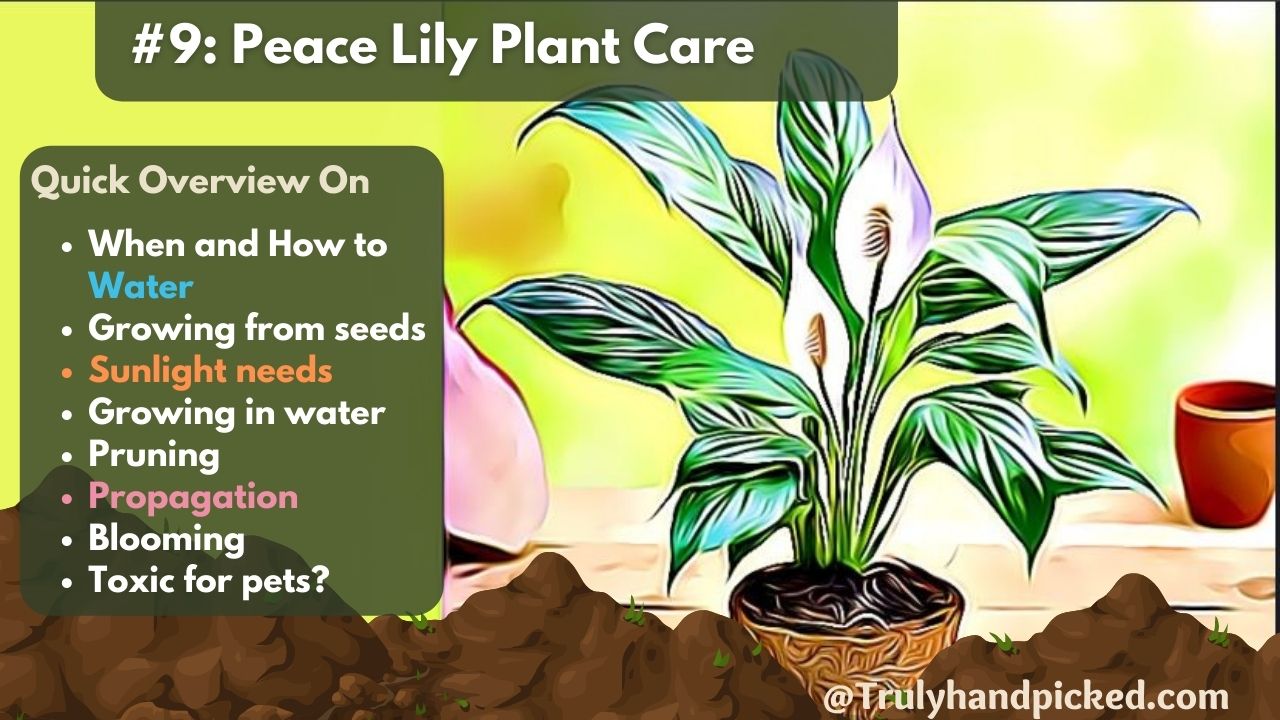
Potting soil
Unlike soil-sensitive plants, peace lily plants will thrive in regular soil with house plant potting mix or even succulent plant potting mix.
A well-drained nutrient-rich potting mix or loamy organic matter-rich compost goes well for this plant. Any kind of soil is okay along with one part of sand or perlite or barks or peat moss, for increased aeration.
How Often To Water Peace Lilies
Overwatering and underwatering can make the leaves droop. Peace lily plants are good at handling underwatering rather than over-watering and root rot.
When to water: It is best to water your plant when the soil has turned dry. If you are unsure, you can poke your finger or stick to know if the soil is moist or dry.
Though peace lily plants are low maintenance plants, they are sensitive to chemicals fluoride and chlorine in the water. Use filtered normal water at room temperature.
Watering weekly once is good but it also depends on your zone and season of the year. Yet wilting is a major sign that shows it’s over or underwatered.
Being tropical by nature your peace lilies like humid climates and like to be misted in summer for healthy growth.
If your plant has drooping leaves even after watering, do check blocked drain holes for proper drainage. Overwet soil will suffocate your plant without enough air pockets.
How much sunlight is good for Peace Lily
Peace lily plants are one of the best low-light and shade-loving plants. Place yours in a well-lit room with indirect sunlight for your plant.
They can also survive in a room with fluorescent lamps and without sunlight. But, having enough indirect sunlight will make your plants bloom faster.
Although peace lilies can tolerate bright light under a window or in a corner, extended hours under direct sunlight will burn your plants. Just like watering, too much sunlight can also make your plant leaf turn yellow or even burn it to brown.
Shadier and medium-light corners are just apt for your peace lily plants.
Related: Why my peace Lily flowers are green
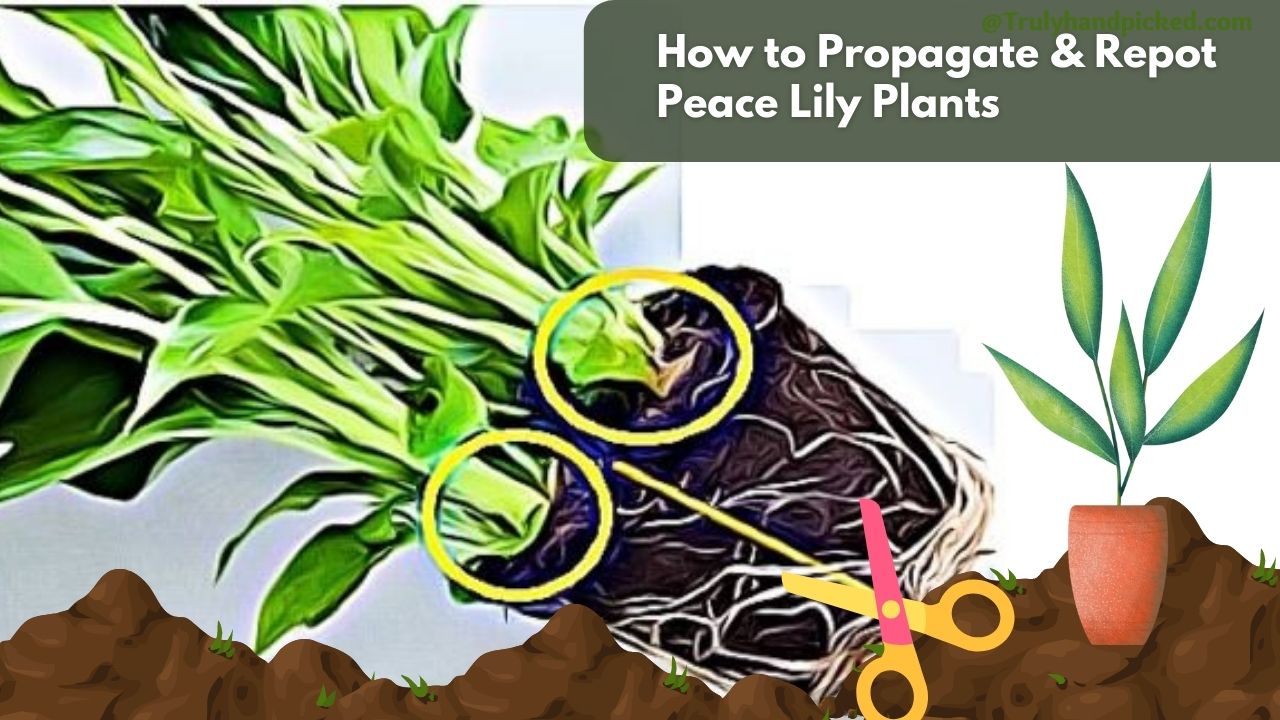
When and How to Transplant/Repot
Peace lily plants are not fast growers and they ask you for bigger pots every few months.
When to transplant/repot bigger: When your peace lily often shows signs of drooping leaves and the soil dries every few days mean your plant is drinking more and it has outgrown the pot. So, it’s time your plant is asking for a bigger space(pot).
Should you water after transplanting: Water your plant only if the soil has gone dry or if you have recently used fertilizers for that plant. Transplant shock is common and it will spring back soon from wilting so, water or mist only if it’s really dry.
How often to fertilize your peace lily
When to add fertilizers: They are not aggressive and hefty eaters, so feeding once every three months is more than enough.
If you are about to use synthetic fertilizers use the 20-20-20 in half or go for lower strength and dose than regular.
Using vermicompost or compost is good to go as it’s rich and has a better water-holding capacity. Also, organic compost can be used once a month which slowly releases enough nitrogen and potassium for your peace lilies.
Can I use Banana peels, coffee, and eggshells as fertilizer for my peace lily: yes you can bury them in the pot or sprinkle them on the soil surface, yet it is recommended to add them to compost.
As fruit peels or crushed eggshells or coffee powder processed by worms or organisms are much more easily absorbed by plants.
